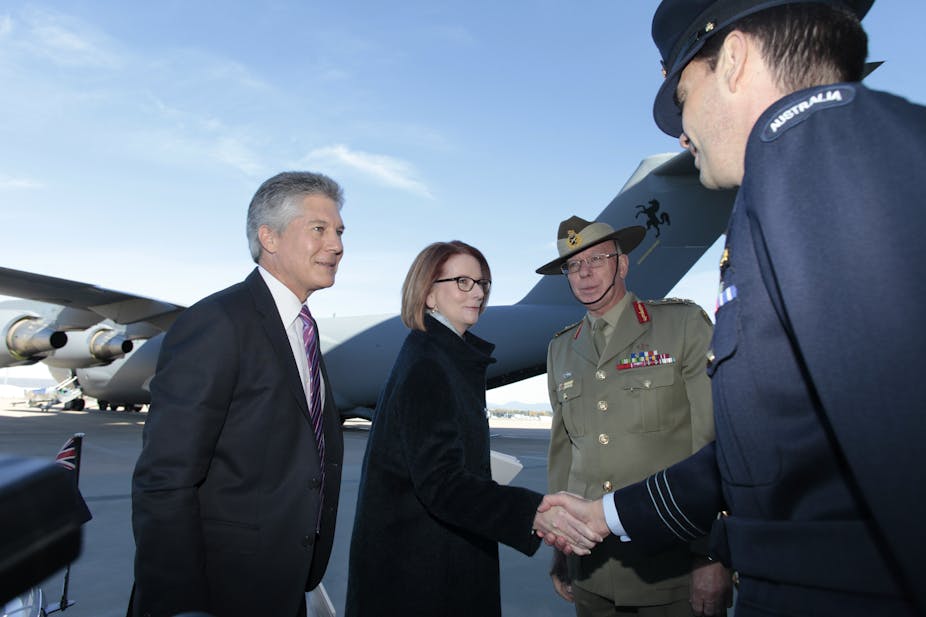The Government’s new Defence White Paper has adopted a conciliatory tone towards China, focused attention on the region and announced the purchase of a dozen new high-tech fighter planes.
Julia Gillard said there would a modest increase in defence spending - currently at its lowest level since the late 1930s - but emphasised that returning to 2% of GDP was a longer-term objective “as and when fiscal circumstances allow”.
The purchase of 12 EA-18G Growler planes replaces the government’s previous plan to upgrade 12 of its 24 Super Hornets. This is to ensure “a first-class air combat capability” while Australia waits for delivery of the F-35A Joint Strike Fighters, which have previously been delayed.
The Government has reaffirmed its pledge for a dozen new submarines - and ruled out the option of buying off-the-shelf overseas models and assembling them here.
The options have been narrowed to either building an “evolved Collins Class” design or going with new design options considered best to meet Australia’s strategical requirements. Meanwhile, a new “future submarine industry skills plan” will be launched to preserve the expertise needed to build the subs. This program has an eye electorally to South Australia and Victoria.
The White Paper, which was bought forward a year, refocuses Australia’s defence stance for the post-Afghanistan era, concentrating on the region.
It puts the Indo-Pacific front-and-centre, saying this “strategic arc is beginning to emerge, connecting the Indian and Pacific Oceans through Southeast Asia”.
“The emerging Indo-Pacific system is predominantly a maritime environment with Southeast Asia at its geographic centre. The region’s big strategic challenges will last for decades and their mismanagement could have significant consequences,” it says.
The paper says that more than anything else, the United States-China relationship will determine the regional outlook. “Some competition is inevitable, but both seek stability and prosperity, not conflict.”
Where the 2009 White Paper reflected then-Prime Minister Kevin Rudd’s deep suspicion of China and attracted China’s hostility, this one has softer, more positive language.
“Australia welcomes China’s rise, not just because of the social and economic benefits it has bought China’s people, but also in recognition of the benefits that it has delivered to states around the globe.”
It says Australia does not approach China as an adversary - “rather, its policy is aimed at encouraging China’s peaceful rise and ensuring that strategic competition in the region does not lead to conflict”.
Prime Minister Julia Gillard told a news conference there was “fundamental continuity” in Australia’s policy toward China, and the government wanted to see transparency by China in its military modernisation.
But while the 2009 White Paper sternly told China it needed to better explain its military modernisation, the lecturing has been dropped.
“China’s defence capabilities are growing and its military is modernising, as a natural and legitimate outcome of its economic growth. This will inevitably affect the strategic calculations and posture of regional countries and is changing the balance of military power in the western Pacific,” it says.
Defence Minister Stephen Smith said there had been an “outbreak of bipartisanship” on defence policy. He said opposition leader Tony Abbott had said there would be no further cuts under a Coalition government and had an aspiration to raise spending to 2% of GDP - the same commitment that the government was giving.
But Opposition Defence Spokesman David Johnston questioned where the money was coming from for the Government’s commitments.
And said the Coalition had a plan for the road back to 2% of GDP defence spending, but the government had not. A Coalition government would bring out its own white paper within 18 months of taking office.

